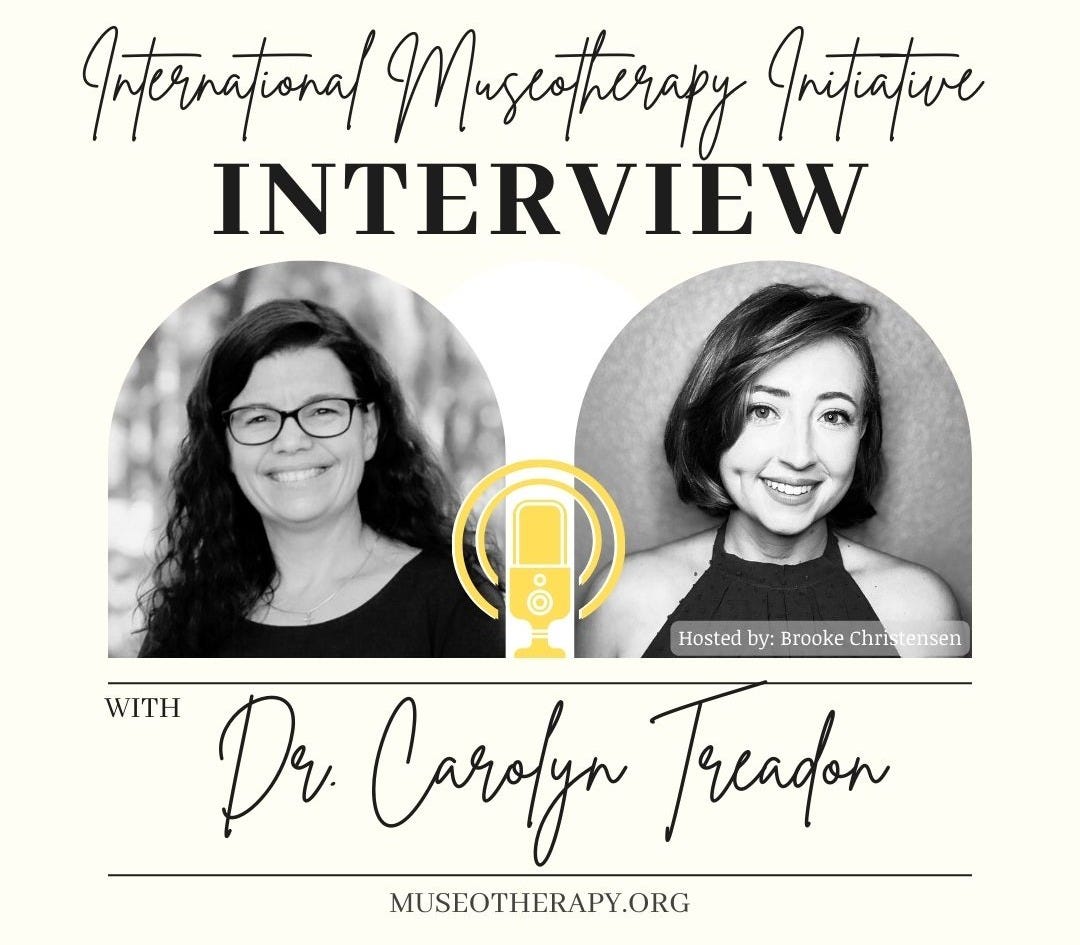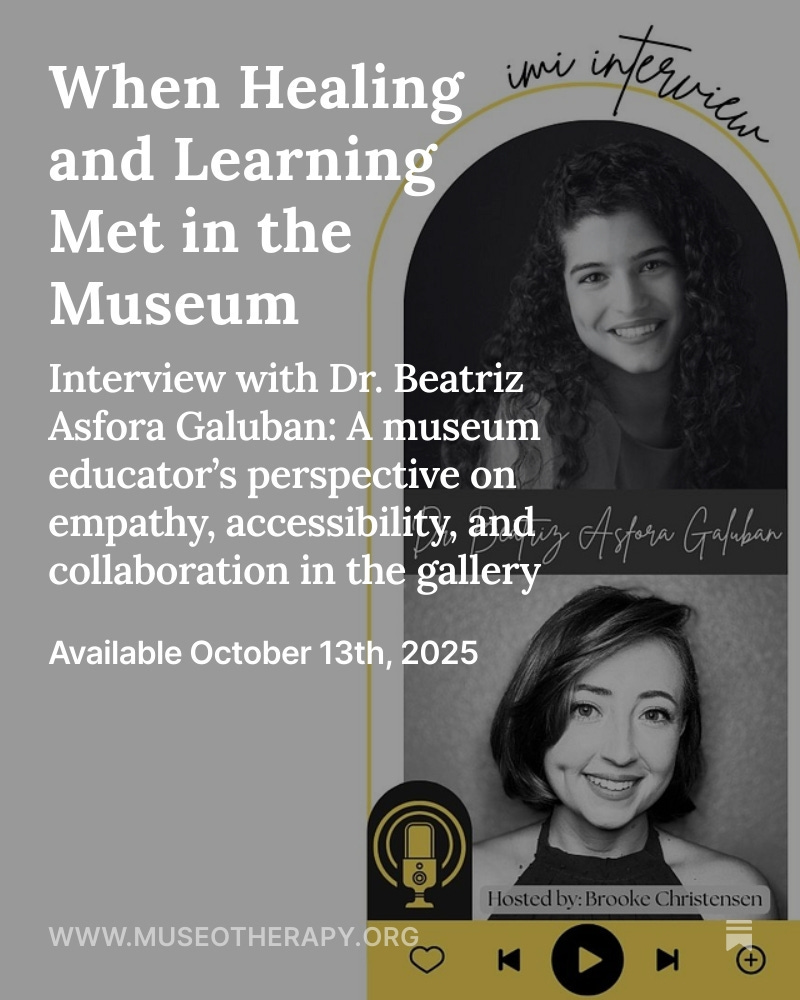When Therapy Walked Into the Museum
A conversation with Dr. Carolyn Treadon about museum-based art therapy: past, present, and future.
🎧 Listen here:
When I started graduate school in art therapy, I pictured therapy in studios and clinics, not under skylights and surrounded by paintings. But museums kept pulling at me. They weren’t just places to display art but places where people could reflect, connect, and sometimes even heal. But as a student, I wasn’t sure where to even start learning how to enter the field of museotherapy, and believe it or not, there isn’t a WikiHow article on how to become a museum-based art therapist.
That’s what drew me to talk with Dr. Carolyn Brown Treadon, one of the pioneers of museum-based art therapy.
“When I first began this work over 20 years ago,” she told me, “it felt like climbing a mountain that no one had climbed before.”
Nearly two decades later, that mountain has become a path many are now walking.
Inside the Conversation
In 2006, Dr. Treadon and her colleagues launched a pilot project with middle school students. The students explored the concept of family by connecting their work to objects in the galleries. What they discovered wasn’t just about art. It was about belonging, identity, and being seen.
Dr. Treadon shared what that project taught her about collaboration between art therapists and museum educators, the misconceptions people still have about museums, and her hopes for the future of this work. She also offered thoughtful advice for students like me who want to enter this emerging field.
And then, she told a story that has stayed with me: a boy proudly showing his mom his self-portrait at a gallery show at the end of that first pilot program. A small moment, but one that captured why museum-based art therapy matters. As she shared it, I felt my own memory stir. I remembered the pride I felt bringing my oldest son, Owen, who was just three at the time, to see my artwork in a gallery show. Even as an adult, I felt that rush of joy and validation of wanting him to see me and my work, the same way that boy wanted his mother to see his. That overlap made the story land even deeper for me. It reminded me that the power of being witnessed through art isn’t just for children or clients. It’s something universal.
Images Referenced in this Interview
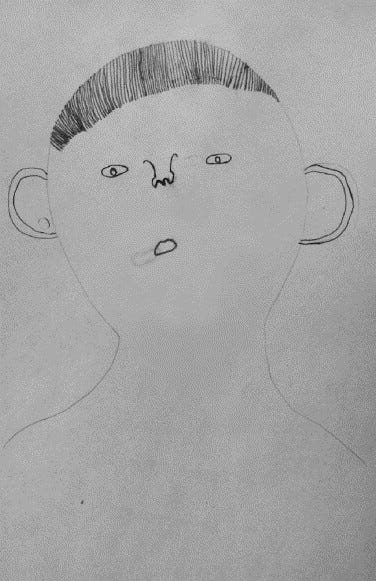
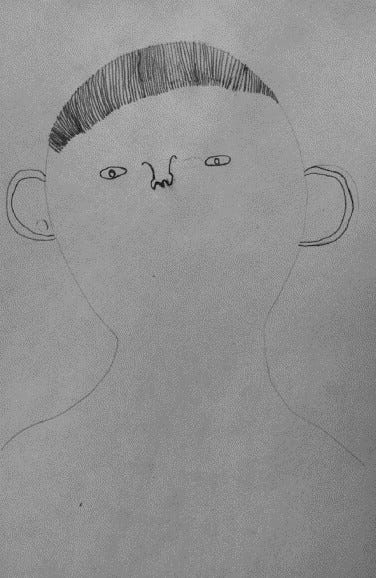

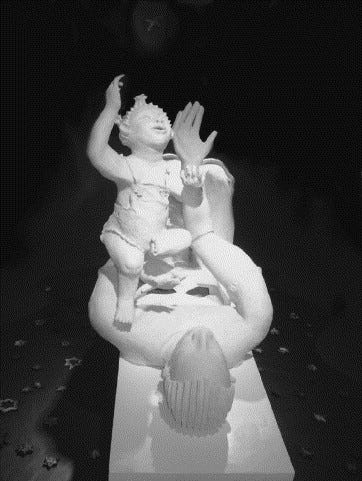
For more on the pilot project, check out Dr. Treadon’s foundational article, Opening the Doors of Art Museums for Therapeutic Processes, an insightful look at how art therapists and museum educators partnered to support emotional awareness and connection.
The edited podcast highlights some of the most powerful parts of our conversation, but the full interview goes even deeper.
If you’d like to hear the full hour-long unedited conversation, please consider becoming a paid subscriber to the International Museotherapy Initiative. Your support helps us continue sharing these voices and expanding the dialogue on art, healing, and community.
✨ Coming Next Month ✨
If Dr. Treadon shows us what museum-based art therapy looks like from the therapy side, then Dr. Beatriz Galuban offers the view from the other side: the museum. In our upcoming conversation, she shares how museum educators approach empathy, accessibility, and community building inside gallery walls—and what happens when those goals intersect with therapeutic practice. Don’t miss it.


